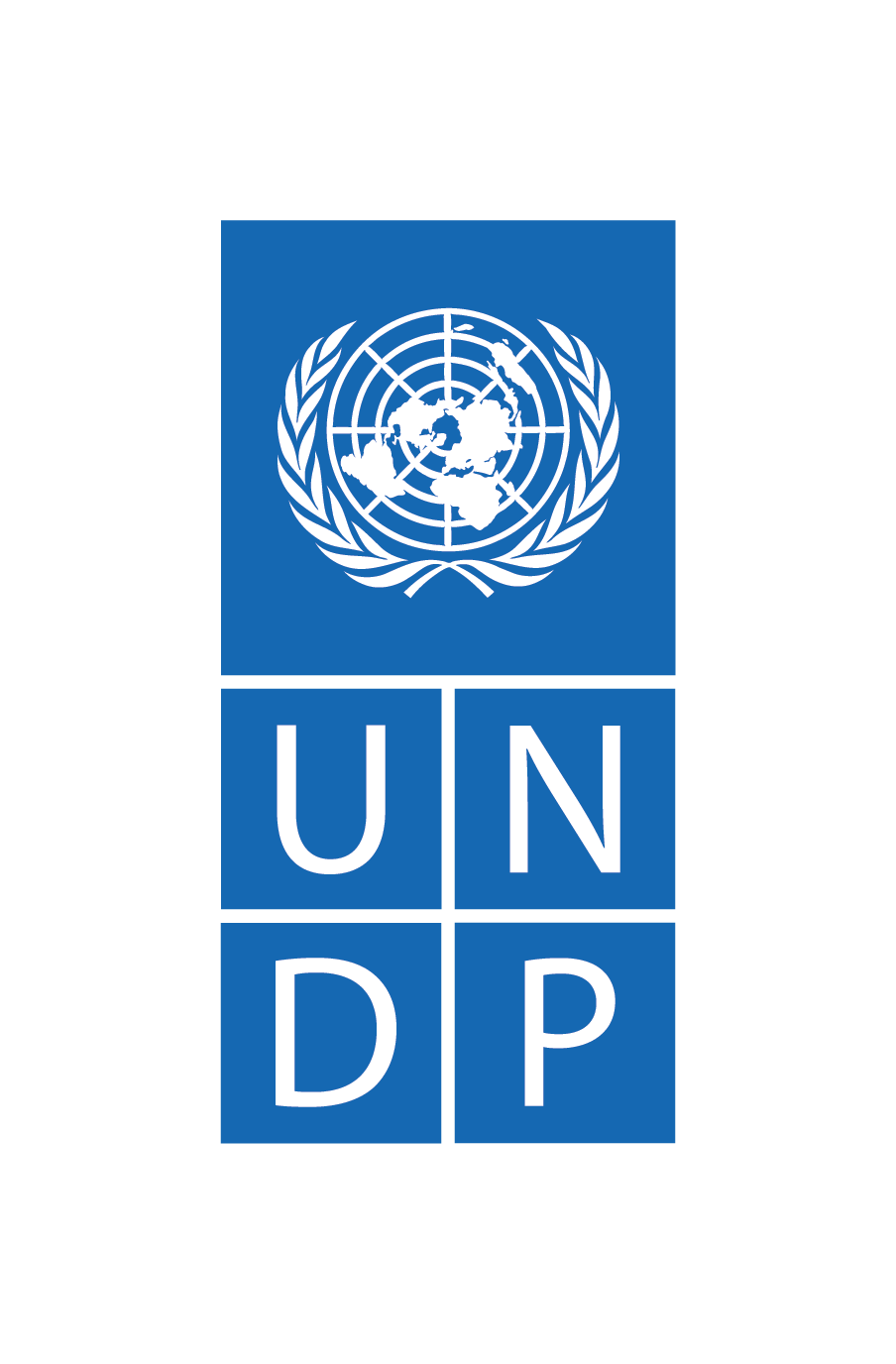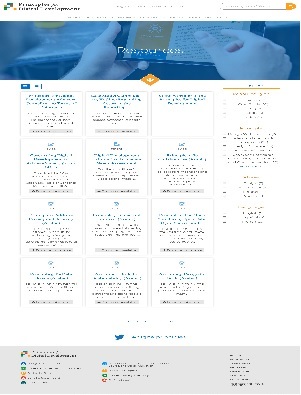Digital technologies for real-time health data and decision-making
UNDP’s approach
Among the applications of digital technologies that UNDP promotes in the health sector are those aimed at strengthening real-time capture, monitoring, and use of data within national HIV, malaria, tuberculosis and other health programmes. This support ranges from the digitalization of national health information systems, such as through the roll-out of the electronic district health information system (DHIS-2), and the use of mobile technologies within disease surveillance and tracking systems. UNDP likewise helps countries to identify and adapt open-source digital tools suitable for resource constrained contexts, including those to support disease monitoring, prevention, diagnosis, and recovery efforts in COVID-19 and beyond. This page provides some examples of digital health technologies that have supported countries to leverage data to enhance the coverage and quality of disease prevention and treatment efforts. Visit the Health information systems section for more information on UNDP’s broader capacity development support to strengthen health management information systems.
UNDP’s support to data systems and tools in the health sector is informed by its digital strategy to harness the potential of digital transformation for development, as well as guided by core Principles for Digital Development. It is important to ensure that amidst the heightened interest in the potential benefits of digital health, all people enjoy the benefits of innovation and that digital technologies help to reduce inequalities. To achieve this, UNDP is committed to ensuring that efforts in utilizing digital technologies are anchored in the values and obligations defined by the United Nations Charter and the Universal Declaration of Human Rights.
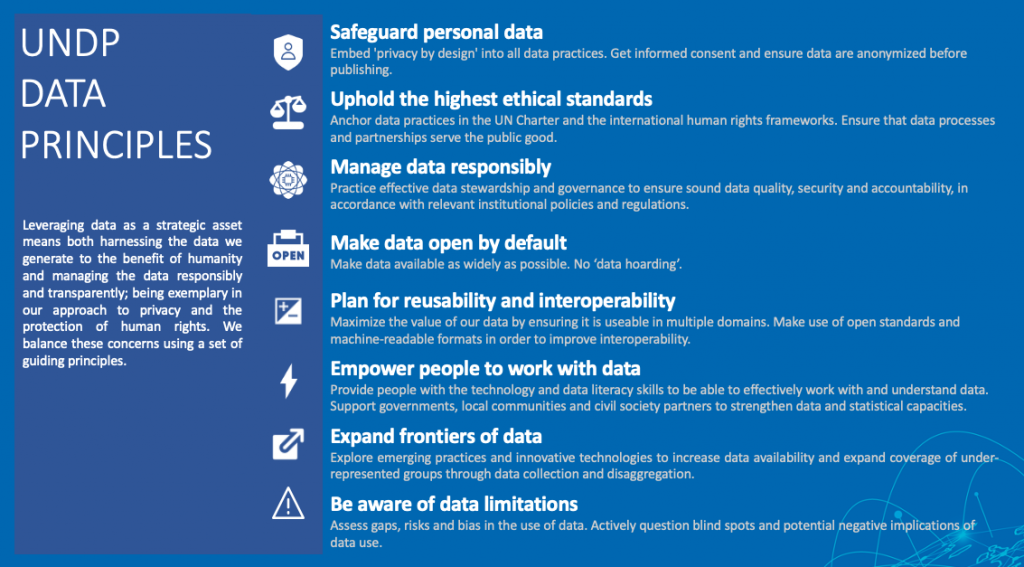
Cross-border platform to prevent tuberculosis
As part of the UNDP-managed Global Fund to fight AIDS, Tuberculosis and Malaria (Global Fund) multi-country tuberculosis grant for migrants, refugees and returnees in Afghanistan, Iran, and Pakistan, UNDP is working with Dure Technologies on a digital application (app) and dashboard to monitor and provide tuberculosis continuum of care. The app captures data on client registration, risk assessment, specimen collection, referral and linkages, sample testing, treatment initiation, treatment adherence, cross border case transfer, and contact tracing. It is able to support cross-border tracking of lost follow up cases through a quick response (QR) code.
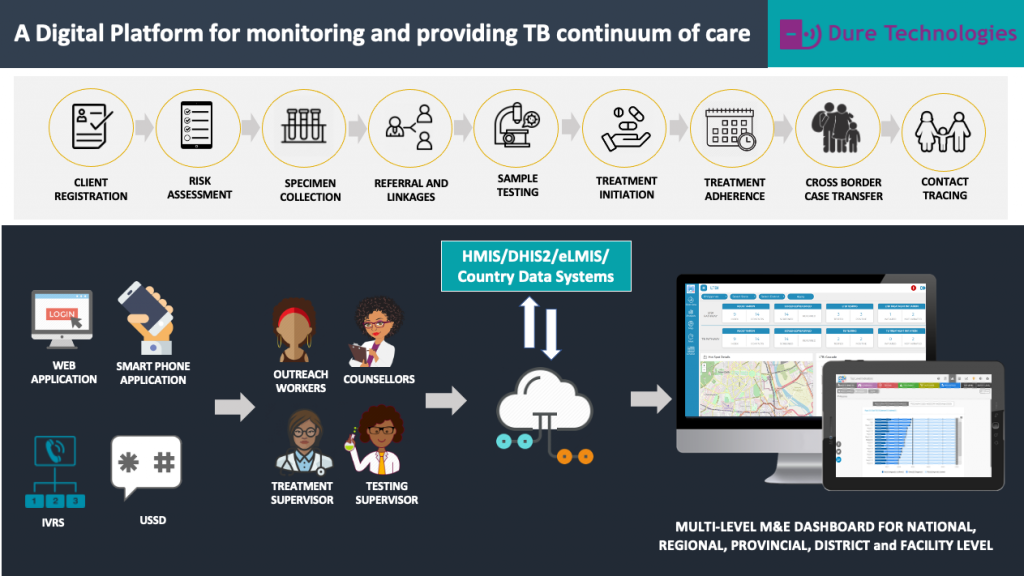
Real-time monitoring of the malaria response in Guinea Bissau
In Guinea Bissau, where malaria is the leading cause of illness, the health information management system is weak and consequently, the data reported not only are of low quality but also arrives late at point of analysis and decision making at the regional and central levels. With financial support from the Global Fund to Fight AIDS, Tuberculosis and Malaria (Global Fund) and the World Bank, UNDP supported the government to introduce real-time monitoring using mobile tablets to digitize malaria data, track malaria outbreaks, and digitally map available medicines and bed-nets. Technological considerations in developing the technology focused on ensuring its linkage to the national health management information system database, the electronic district health information system DHIS2. UNDP received support from the University of Oslo to develop the application as an extension of DHIS2 and configure the tablets with DHIS2 capture, which captures aggregated routine health data, and a DHIS2 tracker, for individual-level patient data. The tool focuses on data related to case management and prevention, mosquito net distribution, availability of malaria medicines, and weekly surveillance for World Health Organization (WHO) notifiable diseases.
Through support of the Global Fund and the World Bank, UNDP has supported the government to operationalize some 300 tablets for digital data collection and reporting. It has likewise provided training to health personnel and data clerks at hospitals and health centres. By contributing to improved completeness, promptness, and quality of data for decision making and the number of times products are out of stock, the introduction of the new digitized reporting systems contributed to a 16 percent decrease in the number of malaria related deaths in Guinea-Bissau between 2017 and 2018.
UNDP has also helped to decentralize the tracker for data collection at the community level, at the point of service. Importantly, health facilities have assumed ownership over the tool, recognizing the value of real-time reporting, as they continue to self-finance the internet payments for the tablets to ensure their continued use.
Digital solutions for malaria prevention in Chad
UNDP supports Chad’s National Malaria Control Programme (NMCP) with malaria prevention for millions of people through a Global Fund grant. Key approaches include the routine and mass distribution of long-lasting insecticide-treated bed nets (LLINs) and seasonal malaria chemoprevention (SMC), a series of preventive medicines given to children under five years during the rainy season, when malaria transmission is highest.
During the 2022 SMC campaign, UNDP and NMCP digitized data collection to more efficiently deliver preventive medicines to children. Before the use of digital tools, information on the number of eligible and treated children was recorded by hand, which can lead to data discrepancies. During the digitized SMC pilot, community health workers collected data using the District Health Information System (DHIS2) SMC Tracker installed on tablets, which enabled them to quickly track children’s treatments and ensure that every eligible child received the correct dose.
Data was then automatically transmitted to the national DHIS2, where discrepancies and trends can be spotted quickly. In total, UNDP and NMCP trained more than 1,300 community health workers across 13 health districts and 184 health facilities in the Lac and Batha regions on digital data collection in the first phase of implementation. The pilot reached 200,000 children and yielded valuable lessons, such as creating instant message groups to share tips and troubleshoot problems among health workers.
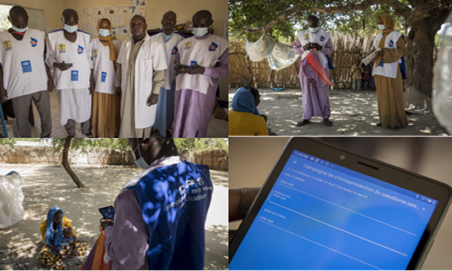
Digital solutions extended to the mass LLIN campaign, which will reach more than 18 million people with 11.6 million LLINs by the end of 2023. Using KoboToolbox, community health workers recorded the number of LLINs delivered to each household. Each tablet came with Mobile Device Manager, a software programme that tracks their location and usage to prevent loss and promote accountability during the campaign.
Following collection, the data was uploaded to DHIS2 for national reporting. UNDP also entered the data into a dedicated dashboard, which was developed to visualize information on LLIN distributions, such as the number of households targeted and reached.
Digitization and digitalization significantly enhance data management, accountability and problem-solving to increase the effectiveness of malaria prevention in Chad. Real-time data helped identify areas that delayed LLIN distributions due to shortages, inaccessible roads or insecurity. In the town of Goré, Logone Oriental, programme managers adapted the campaign to resume distributions when safe conditions returned.
In May 2023, Chad’s NMCP received the Alliance for Malaria Prevention annual award for leadership. This award recognized its role in planning, coordinating and implementing a nationally led malaria prevention campaign, including the completion of the large-scale digitalization pilot and the first phase of full implementation on time.
Building on existing health information systems to monitor COVID-19
A well-functioning health information system is essential to understanding and responding to the COVID-19 pandemic. The circumstances of the current crises, however, pose significant challenges for data collection. It is therefore critical for countries to strengthen and adapt established health information systems to inform the trajectory of the epidemic.
UNDP has supported governments in Guinea Bissau, Zimbabwe, Burundi, and Djibouti to integrate COVID-19 trackers into their existing national health information systems that use the electronic district health information system 2 (DHIS2) software. Having previously worked with Oslo University to help numerous countries roll out DHIS2 to enhance routine health information, during the pandemic, UNDP provided technical assistance to help ministries of health adapt and install the DHIS2 COVID-19 module. This digital data package supports surveillance workflows and automated analysis for key components of routine and active surveillance including:
- COVID-19 case-based surveillance
- contact registration and follow-up programme
- ports of entry screening and follow-up programme
- COVID-19 surveillance event programme
- COVID-19 aggregate surveillance
Many countries have been able to leverage previous investments from the Global Fund to Fight AIDS, Tuberculosis and Malaria (Global Fund) and UNDP technical assistance to develop mobile applications for the surveillance and reporting of disease outbreaks to adapt to the COVID-19 response. For example, in Zimbabwe, UNDP had helped the government to strengthen its weekly disease surveillance system by piloting Frontline SMS, in which data captured on cell phones are automatically sent to a computer database in real-time, transmitting the surveillance data from service delivery points to the district, provincial, and national levels. UNDP has also supported governments to harness mobile technology for sharing COVID-19 information with the public. For instance in Guinea Bissau, it partnered with WhatsApp and other agencies to establish the WhatsApp Coronavirus Information Hub, to improve communication during the crisis and establish a reliable platform for accurate information sharing.
In addition to this, UNDP’s marketplace for proven digital solutions, Digital X, exists to make scaling digital solutions across borders faster, easier, and safer. An emergent priority for UNDP is to scale up what already works, reduce duplication, and improve coordination across development actors. This is why Digital X supports scaling digital solutions from not only UNDP, but also from UN agencies, social enterprises, private sector, nonprofits, NGOs, universities, and more.
Key resources
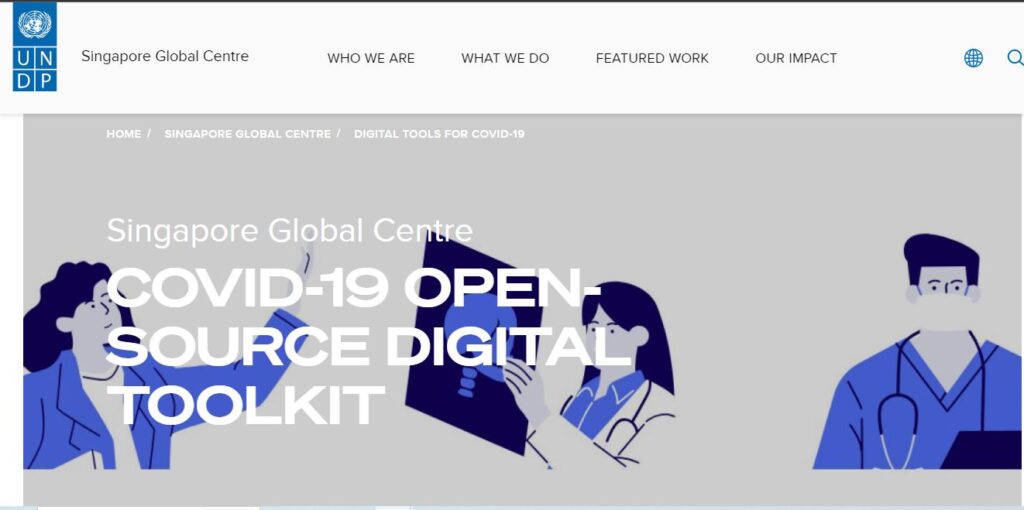
COVID-19 Open-Source Digital Toolkit
UNDP Singapore Global Centre for Technology, Innovation and Sustainable Development
Website
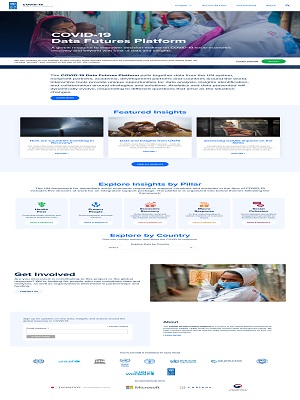
UNDP COVID-19 Data Futures Platform
United Nations Development Programme
The COVID-19 Data Futures Platform pulls together data from the UN system, nonprofit partners, academia, development partners and countries around the world. Interactive tools provide unique opportunities for data analysis, insights identification, and collaboration around strategies and solutions.
Website
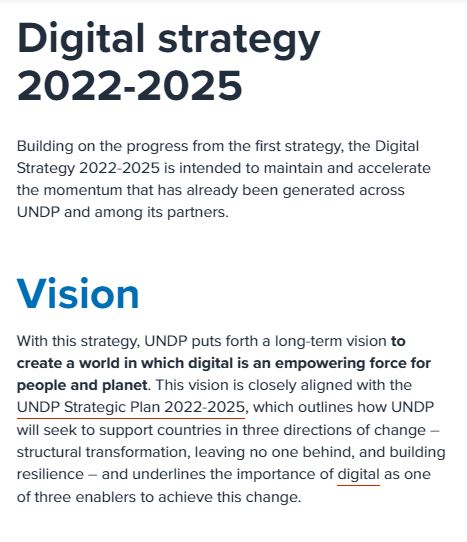
UNDP Digital Strategy (2022 – 2025)
United Nations Development Programme
Website
